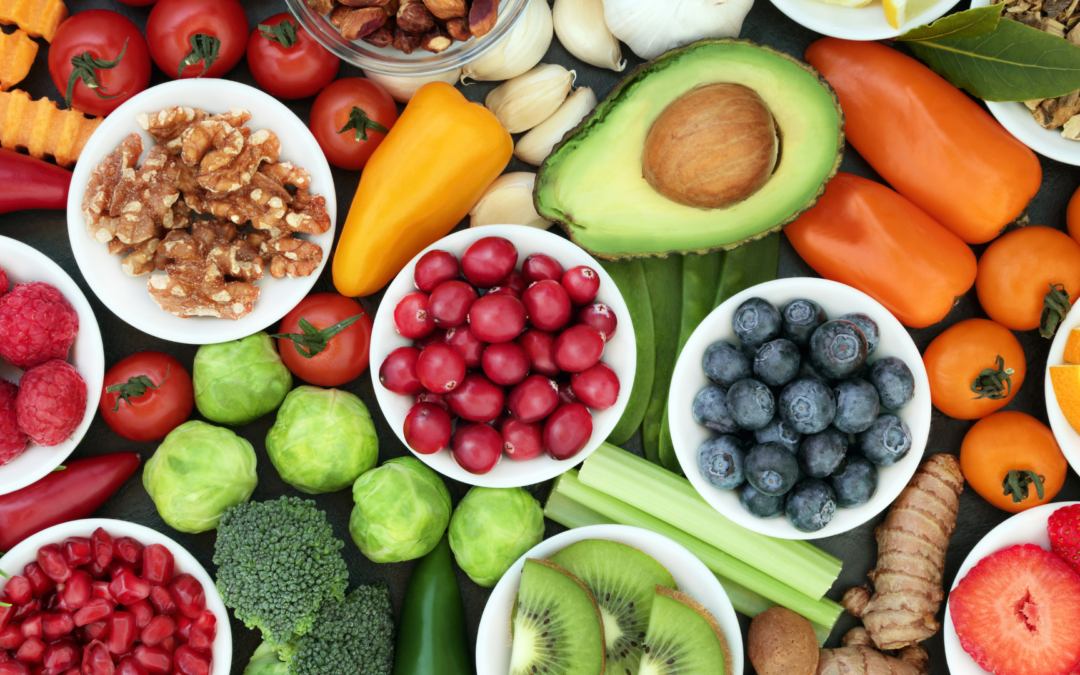Nutrition and Yoga: Eating for Optimal Health and Energy
Alright, so you’re diving into yoga, trying to hit those poses, nail your breathing, and maybe even touch your toes. That’s cool! But here’s a secret: Yoga’s not just about bending, stretching, and balancing your chakras—it’s also about fueling your body the right way. The way you eat can have a massive impact on how you feel on the mat. Your energy levels, flexibility, and even your mental clarity all come down to what’s on your plate. With online yoga classes for work-life balance, you can seamlessly integrate yoga into your routine, helping you stay energized and centered both on and off the mat.
Let’s break it down into digestible pieces (pun intended) so you can feed your inner yogi for that optimal health and energy.
1. The Mind-Body Connection
First off, yoga isn’t just a physical practice. It’s a mind-body-spirit thing, and what you eat impacts all three. Picture this: You’ve just smashed a greasy burger and fries. Now imagine how heavy you feel when you roll out your mat, trying to get into Downward Dog. Not ideal, right? Compare that to how light and energized you feel after a smoothie with fresh fruit, greens, and maybe some almond butter. Night and day, isn’t it?
What you eat becomes part of you. Literally. Your body breaks down that food and uses it to repair tissues, build muscle, and fuel brain function. So, if you’re munching on processed, low-vibe food, that’s going to reflect in your energy, flexibility, and overall vibe on the mat. To get the most out of your practice, you want to be eating high-vibe, nutrient-packed foods.

2. Timing Is Everything
Now, when you eat is almost as important as what you eat. No one’s suggesting you hit up hot yoga right after scarfing down a burrito. Nope, that’s a recipe for disaster. Timing your meals right can make or break your yoga session.
Here’s a good rule of thumb:
- Light Snacks: If you’re heading to a class in a couple of hours, go for something light and easily digestible. Think bananas, a handful of nuts, or maybe some yogurt with a little honey. These will give you a quick burst of energy without making you feel like you’ve got a rock in your stomach.
- Big Meals: Plan your larger meals at least 3-4 hours before class. Foods like whole grains, lean proteins, and vegetables are great here because they digest slower and give you sustained energy.
- Post-Yoga Feeds: After a solid practice, you want to refuel but not overload your system. Smoothies with protein powder, salads with healthy fats, or a light meal with lean protein and veggies are your best friends here.
3. The Importance of Hydration
Water is life. Straight up. If you’re trying to twist yourself into a human pretzel or flow through your sun salutations and you’re dehydrated, you’re going to feel sluggish, dizzy, and just plain out of it. Plus, yoga makes you sweat, so it’s super important to replenish your fluids.
Before class, drink water, but don’t chug a whole gallon. Sip steadily throughout the day. And after class, especially if you’ve been in a heated room, drink up to restore balance. Coconut water is a good option post-yoga because it’s loaded with electrolytes.
4. The Yoga Diet Vibe
There’s a whole philosophy behind food when it comes to yoga. It’s called a Sattvic diet. In yoga, foods are classified into three categories: Sattvic (pure and harmonious), Rajasic (stimulating), and Tamasic (dulling or heavy). If you want to eat like a yogi, focus on foods that are Sattvic.
- Sattvic foods: These are light, fresh, and promote calm energy and mental clarity. Think fruits, vegetables, whole grains, nuts, seeds, and legumes. These foods are meant to make you feel light, energized, and aligned with nature. According to the National Institute of Health, the Sattvic diet, known for its purity and balance, is thought to enhance energy levels while promoting happiness, calmness, and mental clarity.
- Rajasic foods: These stimulate the body and mind, making you more active or aggressive. Examples include coffee, spicy foods, and sugar. While these can give you a quick energy boost, they can also lead to restlessness and imbalance.
- Tamasic foods: These are the heavy, lethargy-inducing foods. Processed junk, fast food, greasy stuff, and anything super old or stale falls into this category. They make you feel weighed down and sluggish—pretty much the opposite of how you want to feel in a yoga practice.

5. Go Plant-Based (But Listen to Your Body)
Yoga and vegetarianism go way back, mostly because of the whole “ahimsa” (non-violence) principle. A lot of yogis believe that eating plant-based is not only better for your body but also better for the planet and aligns with the compassionate philosophy behind yoga.
But hey, if you’re a meat-eater, don’t stress! You can still fuel your yoga practice with animal-based proteins. Just try to focus on clean, lean options—like organic chicken, wild-caught fish, or pasture-raised eggs. The key is balance and listening to your body. If you feel great and energized with your diet, then you’re already halfway there.
6. Carbs Are Your Friends
Listen, carbs have gotten a bad rep in recent years, but your body needs them, especially for something as physically and mentally demanding as yoga. You don’t want to go full keto and then wonder why you’re running out of gas halfway through your practice. Carbs = energy. The trick is choosing the right kind.
- Whole grains: Brown rice, quinoa, oatmeal, and whole wheat products are excellent sources of complex carbs. They digest slowly, giving you steady energy without the sugar crash.
- Fruits: Nature’s candy! Bananas, apples, berries, and oranges are packed with natural sugars and fiber, giving you a quick energy boost without the downside of refined sugar.
- Veggies: Sweet potatoes, squash, and beets are awesome sources of energy-boosting carbs too.
Just don’t go overboard, and avoid highly processed, refined carbs like white bread or pastries before a class—they’ll leave you feeling heavy and sluggish.
7. Protein for Recovery
Yoga might not seem as intense as weightlifting or running, but it still puts your body through its paces. You’re stretching, holding poses, and activating muscles in ways you might not even realize. So post-yoga, it’s important to get some protein to help your muscles recover and repair.
Whether you go for plant-based protein like lentils, beans, tofu, and nuts or animal-based options like eggs, chicken, or fish, the key is to make sure you’re getting enough to support your active lifestyle.
8. Healthy Fats for Balance
Fats aren’t the enemy, and if you’re doing yoga, you want them on your side. Healthy fats support brain function, hormone production, and keep your energy levels stable throughout the day. Plus, they help you absorb vitamins from all those healthy veggies you’re eating.
Here’s where you find the good stuff:
- Avocados: Smooth, creamy, and packed with heart-healthy monounsaturated fats.
- Nuts and seeds: Almonds, chia seeds, flaxseeds, and walnuts are loaded with omega-3s and protein.
- Olive oil: Drizzle some of this on your salad or veggies for a boost of healthy fat that supports heart health.

9. Snack Smart
Sometimes you need a quick bite between yoga sessions or to keep your energy up throughout the day. Here’s how to snack smart:
- Trail mix: A handful of nuts, seeds, and dried fruit gives you a balanced mix of fats, protein, and carbs.
- Fruit and nut butter: Apple slices with almond butter are an easy, delicious snack that won’t weigh you down.
- Greek yogurt with honey: Full of probiotics, protein, and just a little natural sweetness to keep you going.
10. Listen to Your Body
At the end of the day, everyone’s body is different, and that’s why online yoga classes offer the flexibility to tune into what works best for you. While there are general guidelines for eating to fuel your yoga practice, it’s really about listening to your body and figuring out what makes you feel light, energized, and strong. Notice how certain foods make you feel before and after yoga. Experiment with your diet—keep what works, ditch what doesn’t. Your body will thank you for it.
And if you’re curious about finding the right practice for you, explore our blog “Understanding the Different Types of Yoga: Which One is Right for You?“ to match your yoga style with your unique needs.
Conclusion
So, there you have it! Yoga isn’t just about what happens on the mat, it’s about how you live your life off the mat too—and what you put in your body plays a huge role. By eating clean, balanced meals packed with whole foods, you’ll not only feel better during your yoga sessions but also in everyday life.
Fuel your practice, hydrate like a pro, and keep your body in that sweet spot of energy and calm. Ready to flow?
Inquiry
If you have any questions, please feel free to reach out. We’ll be glad to help!

